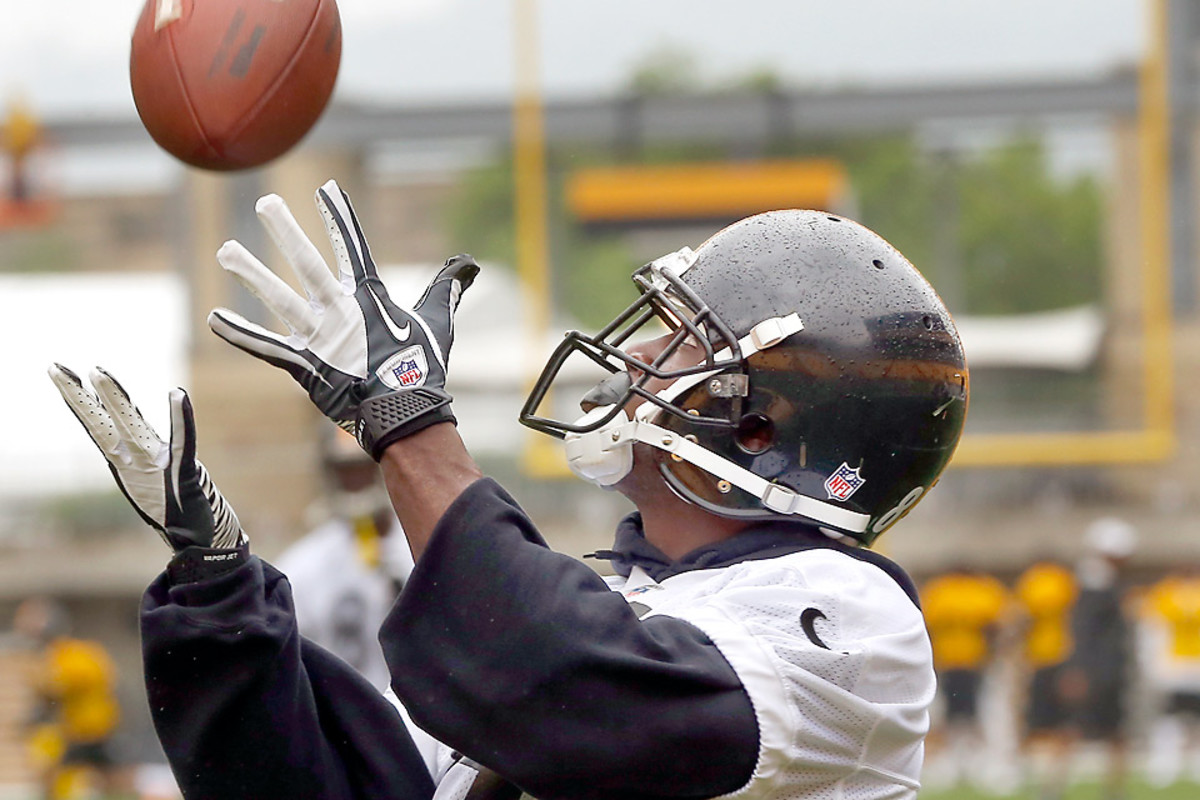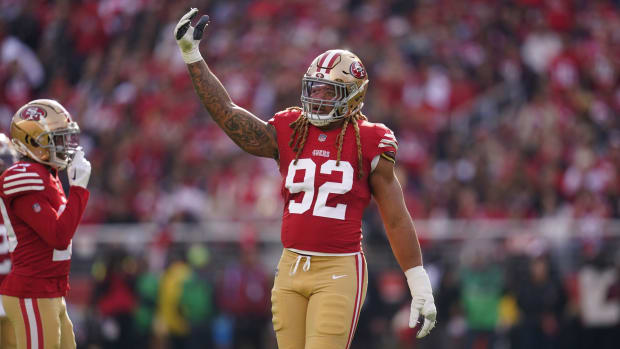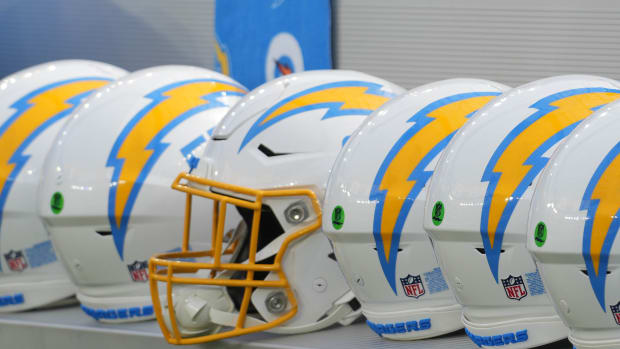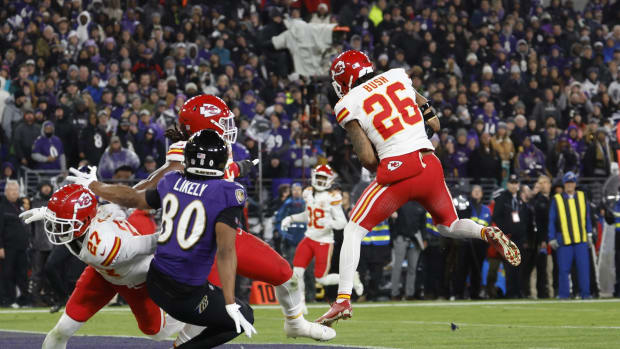Steelers Preview: Black and Gold Standard
The Rooney family’s Steelers are the gold standard for stability in pro sports. The front office, headed since 2000 by Kevin Colbert, has the security to abide by a resolute formula for steady, long-term player development. It generally drafts to fill needs two or three years out. So instead of rebuilding, the Steelers are constantly replenishing. Older stars are often let go before they have a chance to wash up; younger (and cheaper) prospects are integrated as soon as they’ve had a chance to learn the system. Remarkably, every starter on this year’s defense, save for ex-Redskin Ryan Clark, was originally drafted (or signed) by the Steelers and spent his rookie season in a backup role.
This is the benefit of having a head coach who doesn’t have to worry about impetuously being fired. Mike Tomlin, just the club’s third coach since 1969, can actually take time to properly groom players (which, indirectly, strengthens the fibers of the whole Steelers program). This approach has brought the Steelers an NFL-high six Super Bowl titles and 14 AFC championship game appearances.
That’s not to say that no coaches are ever replaced. For Tomlin’s first five years, the Steelers had a very good offensive coordinator in Bruce Arians. But in January 2012, Arians and the organization abruptly parted ways.
Todd Haley, whose father was Pittsburgh’s player personnel director from 1971 through ’90, was hired as offensive coordinator and had a bumpy first year. The 2012 Steelers had the league’s No. 1-ranked pass defense and No. 2-ranked run defense, but a wildly inconsistent offense drove them to a disappointing 8–8 record. Heading into this season, many still worry about the temperamental Haley’s relationship with his players, most notably Ben Roethlisberger. Of course, most relationships in pro sports are steered by wins and losses—which is why it’s Haley’s system that should be scrutinized.
OFFENSE
Ben Roethlisberger is the type of quarterback coaches can’t help but try to change. They’re unable to see past his sandlot habits. In their minds, Roethlisberger’s improvisational magic might lead to a few astounding third-down conversions, but in the broader picture it’s symptomatic of an under-cultivated talent not adhering to the structure of the play as it’s been designed. Coaches exist to smooth out such rough edges.
Arians wisely recognized that Roethlisberger is an exception. Observers marvel at the electrifying mobility of Michael Vick or the rifle arm of Jay Cutler, but all-in-all, no quarterback of this era has been more physically gifted than the unconventional Roethlisberger. It’s not just that at 6-5 and 241 pounds he can run around, pump fake and make off-balance throws with defenders hanging off him; it’s that he can do these things while keeping his eyes downfield. And they’re not merely off-balance throws—they’re often improbably accurate shots that no defensive scheme could possibly prepare to combat. Instead of trying to harness Roethlisberger, Arians built a passing attack around slower developing downfield routes that left room for freestyling.
Ben Roethlisberger and Todd Haley will have to work in better harmony in their second year together. (Karl Walter/Getty Images)
But no matter how great the freestyler, he can’t riff away all the time. Arians’ system still has rules. Ultimately, its two-tight end, play-action foundation didn’t feel like a great stylistic fit for a quarterback who pined to play four-wide. Eyebrows were raised after Haley’s hiring because his system is similar to Arians’, at least in terms of run concepts and multi-tight end personnel. But Haley’s passing game doesn’t offer the same room for improvisation. It’s built on shorter drops, which means more emphasis on precision-timing and pre-snap reads. To his credit, Roethlisberger has become more mechanically refined and intellectually acute. This has helped keep the perennially battered 31-year-old upright. In his first eight seasons Roethlisberger was sacked once every 12 dropbacks; last season he was sacked once every 16 dropbacks.
That said, a sounder, safer Roethlisberger is not necessarily a more comfortable Roethlisberger. The chemistry with his receivers often seemed skewed in 2012. The costly interceptions Roethlisberger threw at the end of losses to Dallas and Cincinnati were the antithesis of the crunch-time plays he’s known for making. After the season Roethlisberger was one of many Steelers who talked about having difficulties with Haley’s system.
Pittsburgh players claim that most of their issues have been corrected (with Haley receiving new input from Roethlisberger). Optimism is easy to find in summer. But it could be more elusive come fall, given this receiving corps has taken a step back. With Mike Wallace, who departed as a free agent to Miami, no longer stretching defenses over the top, Antonio Brown will face more concentrated coverages. Brown has the speed and quickness to get open; his dexterity in and out of breaks might be the best in football. Nevertheless, being a true top weapon will be an adjustment for a fourth-year pro who technically has just 13 starts and barely 2,000 receiving yards to his name.
Emmanuel Sanders, a very effective seam weapon out of trips sets, will replace Wallace in the base offense this year. At 5-11 and 180 pounds, he is essentially a less-proven version of Brown, which doesn’t make for much dimension. But Sanders’ expiring contract and the team’s minimal cap space in 2014 suggest Wallace’s long-term replacement is actually third-round rookie Markus Wheaton, who has the type of long-striding speed his predecessor had. Ideally, Wheaton will acclimate to the NFL well enough to immediately be the No. 3 on the outside. If he can’t, lumbering veterans Jerricho Cotchery and Plaxico Burress will compete for the job.
Haley’s scheme features tight ends a little more in the air than Arians’ did, though that may change this season as 2012 leading pass-catcher Heath Miller is less than nine months removed from tearing the ACL, MCL and PCL in his right knee. Intriguing but untested 2012 seventh-rounder David Paulson and veteran Matt Spaeth, known more for his blocking, are the only other tight ends on the roster. Haley may have to restructure his offense more around H-backs David Johnson and Will Johnson, who are essentially flex lead-blockers.
With the passing game’s setbacks, Pittsburgh will have to get more from a run game that ranked 26th last season. With Rashard Mendenhall’s welcome now worn out and a pair of sometimes bruising but too-often plodding 230-pounders (Jonathan Dwyer and Isaac Redman—who has reportedly since lost some weight) filling the backfield, it was no surprise to see Colbert use a second-round pick on a running back. It was a surprise that the running back was Le’Veon Bell, another 230-pounder. While they still don’t have a shifty change-of-pace runner (other than stopgap ex-Cardinal LaRod Stephens-Howling), the Steelers say they have a potential three-down back in Bell. At the very least, they’ll have a fresh thumper who seemed to always fall forward at Michigan State.
Bell’s entry to the NFL could be made easier by a talented young line that, while still a work-in-progress on passing downs, is built to bulldoze on the ground. (Though players will have to adapt to the outside zone-blocking concepts new O-line coach Jack Bicknell Jr. brings over from Kansas City.) Anchoring the middle is Maurkice Pouncey, who has blossomed into football’s best all-around center. Pouncey is tremendous out in front and crafty enough to singlehandedly stalemate much heavier nose tackles. The fourth-year pro’s only conspicuous weakness is shotgun snapping.
To Pouncey’s right will be last year’s first-round pick, David DeCastro, and 2011 second-rounder Marcus Gilbert. Both players were plagued by injuries last season, but if healthy, they could form the AFC’s most potent right-side blocking tandem. On the left, puzzle piece Ramon Foster is at guard, while second-year pro Mike Adams will be tried at left tackle. (Note: Gilbert has opened camp at left tackle and may wind up staying there, especially given that Adams has missed offseason work recovering from a stabbing.) Adams has the light feet and quick hands toAdams has the light feet and quick hands to play the position, but he’s still trying to get his pass-blocking up to the level of his run-blocking. It’s vital that he be comfortable; while the Steelers usually carry a veteran security blanket in the second string, their backups this year are 2012 seventh-rounder Kelvin Beachum and light-legged, heavy-footed ex-Jaguar Guy Whimper.
DEFENSE
The old “Blitzburgh” epithet and visions of explosive 3-4 edge-rushers are what come to mind with Steelers defense. But last season it was a stingy secondary that carried this unit to its fourth No. 1 ranking in six years.
Coordinator Dick LeBeau does a great job letting his assistants install player-friendly wrinkles in the scheme’s various matchup zone coverages. Under third-year secondary coach Carnell Lake, the focus has been on simplicity and not getting beat deep. That plan is working; last season Steelers opponents were 0 for 30 on passes that traveled at least 30 yards through the air.
Much of the secondary’s cohesiveness stems from the ingenuity of veteran safeties Troy Polamalu and Ryan Clark. The 32-year-old Polamalu could not get away with his unconventional freelancing if there wasn’t an acute technician working off him on the back end. Clark was also a big reason why this defense fared well in the nine games that Polamalu missed with a calf injury in 2013. Valuable as the 33-year-old Clark is, his expiring contract and the recent fourth-round selection of hard-hitting Shamarko Thomas suggests this will be his final year in black and gold.
Part of Pittsburgh’s excellence in pass defense is schematic. LeBeau’s zone blitzes are designed for creating pressure with just four or five rushers, leaving ample bodies to fill the matchup zones. This lends greater flexibility in the coverage’s constant rotations, exchanges and underneath buzzes. It also allows the Steelers to place fewer demands on their cornerbacks, which is why the team is comfortable waiting until the middle rounds to draft this premium position. (The last corner Pittsburgh took in the first round was Chad Scott, 16 years ago).
One of the many middle-round corners, Ike Taylor, has evolved into an upper-echelon cover artist over his 11-year career. Taylor regularly shadows the opponent’s No. 1 receiver, playing a variety of press and off-man techniques, sometimes in isolation but often with hints of some inside or underneath help. With Keenan Lewis now in New Orleans, starting opposite Taylor will be Cortez Allen, a 2011 fourth-round pick who played half the snaps last season as the No. 3 or as a fill-in starter. Allen, like Taylor, is agile and capable of guarding the slot.
At outside nickelback is William Gay, back after a disappointing one-year stint in Arizona. Gay is familiar with the system, but if he struggles as he often did in 2010 and ’11, coaches could turn to the more athletic but still undeveloped third-year man Curtis Brown. Or, as a slim possibility, they could turn to fifth-round rookie Terry Hawthorne.
There’s been some out-with-the-old, in-with-the-new in Pittsburgh’s front seven, with veteran mainstays James Harrison and Casey Hampton being replaced. The original plan was for Jason Worilds to one day fill Harrison’s void. However, the 2010 second-rounder has not stood out in 10 starts over the last two years. Even if Worilds catches fire in his contract year, the Steelers will likely eye Jarvis Jones as the long-term right outside 'backer. They believe the first-round rookie is tailor-made for their system. (When Jones ran an unappealing 4.9 40 at Georgia’s Pro Day, Colbert and his staff rejoiced, knowing the projected top-10 pick would likely drop to them at 17.)
Once considered a possible top-10 pick, Jarvis Jones fell to the Steelers at 17th overall. (Keith Srakocic/AP)
There is no high draft pick to replace Hampton, but undrafted fourth-year nose tackle Steve McLendon has looked very good in a supporting role the past few years. He plays with natural leverage and has been able to carry his frame’s additional weight. In the event that McLendon can’t handle the rigors of a fulltime gig, the Steelers have kept 2012 fourth-round pick Alameda Ta’amu around despite a drunk-driving conviction last year. (Ta’amu was also arrested but not convicted for a DUI in 2009.)
Helping McLendon with the dirty work that’s vital to run defense will be either Ziggy Hood or Cameron Heyward at left end, assuming one of those recent first-round picks can finally play with the every-down strength this scheme commands. More helpful to the run defense will be defensive end Brett Keisel and inside linebacker Larry Foote. Both are tremendous at eating up blockers, Keisel with swift lateral movement and versatility, Foote with tenacious physicality and downhill forcefulness. Their dirty work also opens up pass-rushing lanes for stars in the sub-package designs. Keisel might be the league’s second wiliest stunt-rusher behind Justin Smith; Foote has keen timing on fire-X blitzes.
The Steelers are counting on Lawrence Timmons and LaMarr Woodley to excel in 2013. Timmons’ performance at inside linebacker has been sensational in recent years. He might be the fastest read-and-chase defender and second-level blitzer in football. He’s also become proficient in underneath zone coverage. Coaches now want him to be more of an emotional leader.
As for Woodley, coaches just want him to be more like the star he was before signing a six-year, contract in 2011 for a guaranteed $22.5 million. With various hamstring injuries costing him six games in 2011 and three games, plus ostensibly some of his effectiveness, in 2012 (he had a career-low four sacks), there have been whispers about Woodley’s conditioning.
SPECIAL TEAMS
Kicker Shaun Suisham made 28 of his 31 field goal attempts last season. Unfortunately, two of his misses came in the 13-10 home loss to Cincinnati (which ultimately eliminated the Steelers). Punter Drew Butler ranked just 25th in net average a year ago, which is why he now must fend off declining but familiar veteran Brian Moorman for his job. In the return game, Antonio Brown is expected to handle punts while Emmanuel Sanders will be on kicks.
BOTTOM LINE
The roster is less talented than those in recent years, but the organization has always been great at integrating untested youngsters. Ultimately the season will come down to how well the veteran stars perform, which is why the Steelers are narrow favorites in the AFC North.
Andy Benoit is diving deep into each team’s prospects for 2013. Read what he’s done so far.







































